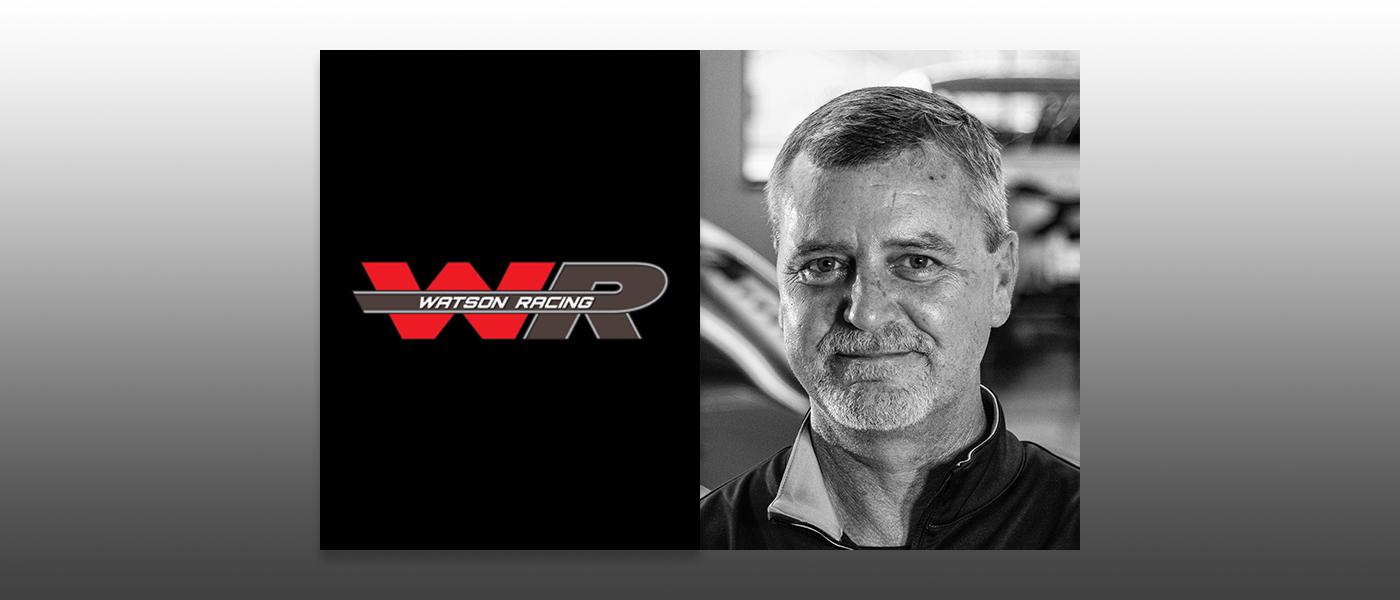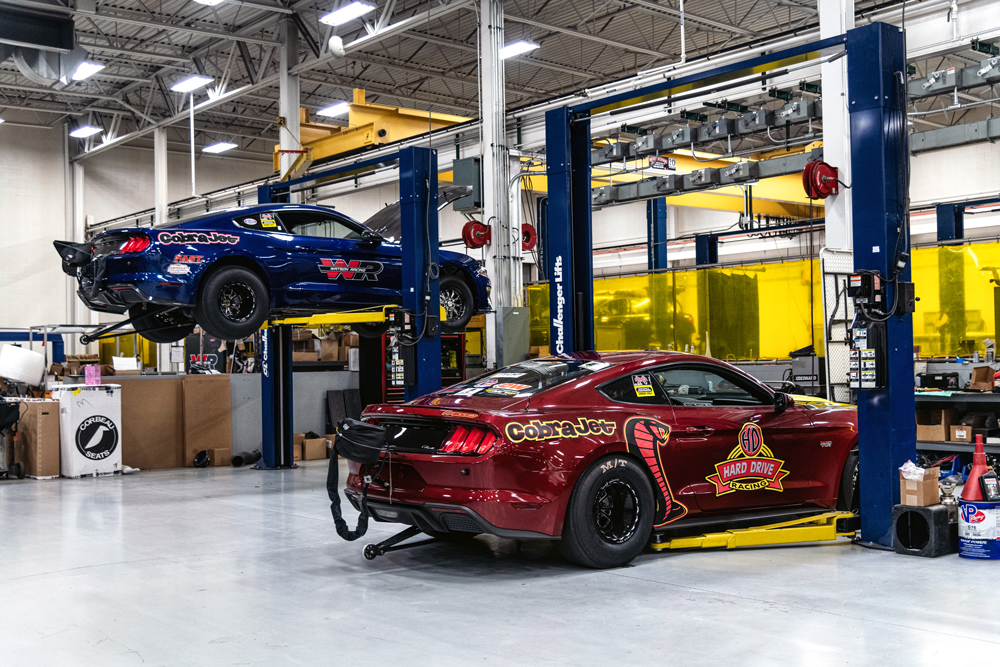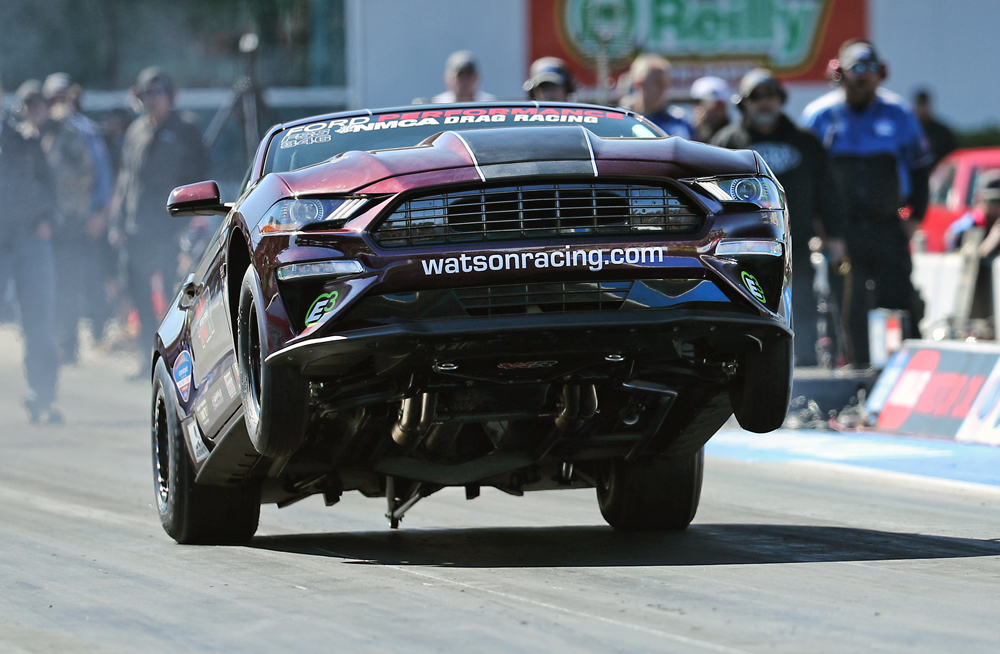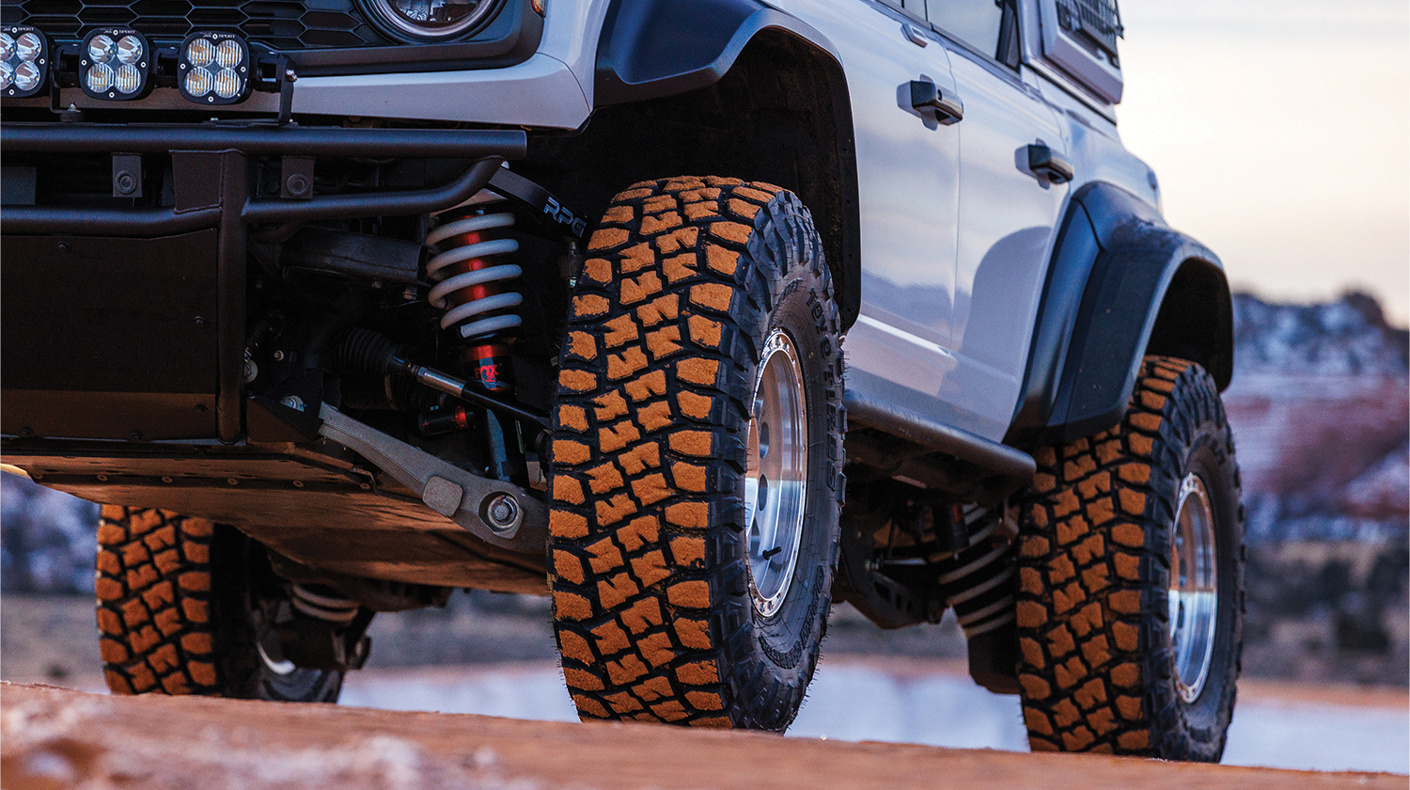Industry Insights: Chuck Watson II

Collaborating closely with Ford engineers, Watson Racing has become a preeminent force within the Mustang brand. This second-generation entrepreneur provides a glimpse of what is to come (more electrification) and how he is addressing some of the most critical challenges to motorsports head-on.
Chuck Watson II was born to race and develop performance parts. He’s the second generation of Watson Engineering, which was founded in 1981 by his father Chuck Watson Sr., and ultimately, Watson Racing. Because the family home and shop are close to Dearborn, Michigan, Ford Motor Company and the Mustang were the natural choice for the Watsons.
The younger Watson started drag racing as soon as he had a driver’s license, and he went into the family business. As a result, he’s been one of the leading aftermarket Mustang developers and builders over the past 40 years. He’s seen the Mustang progress through five generations of the pony car and now looking toward electrification. Since 1987, Watson Engineering has worked with Ford Performance Racing on custom and production parts design. Watson is responsible for development on Ford Performance vehicles including the 2016 Cobra Jet, the Mustang S197 and S550, and the Boss 302 R/S.
Watson Racing is primarily associated with the drag racing world, but it also creates road racing Mustangs for the NASA (National Auto Sport Association) Spec Iron class, has worked with GT World Challenge America racing teams as well, and currently supports racing cars and performance products for GM and Mopar brands as well as Ford.
The senior Watson passed away in 2021, but not before getting back into racing personally after a long hiatus. To honor his father, Watson II went all-out and won a 2022 NMCA Holley EFI Factory Super Cars championship in the family’s supercharged Cobra Jet. We caught up with Watson II to talk about the future of Mustang racing, electrification, and his father’s legacy.

PRI: When you started in 1981, it was all Fox Body Mustangs. How has the Mustang business changed over the years?
Watson: You know, for us it really hasn’t changed. We’ve had parts in the Ford Racing catalog all the way to 1981. We’ve been manufacturing Mustang aftermarket parts, and the first couple things they purchased were a set of the shorty headers and the H-pipe that had the catalyst delete. Both of those pieces were ours. There’s a lot of people who probably don’t know that.
PRI: What do you think are some of the greatest challenges to racing today? Then, what do you think we can do as an industry to help overcome those challenges?
Watson: There are two things. Number one, you’ve got electrification, which is coming. That’s obviously a concern. Then the other concern is what’s been happening over the last couple of years with race tracks starting to dwindle away. That’s pretty concerning and scary.
[To reverse that trend] just look at what’s happened this past season. I think the participation numbers were up. I was at a number of races where they had record crowds. So I think that part’s good. The concern is subdivisions and stuff that are moving in next to race tracks. These are tracks that have been there for 50-plus years. They were out in the middle of nowhere, but the next thing you know there are subdivisions going in next door. Look at what’s going on right now with the Freedom Factory down in Bradenton, Florida. They’re going to put up a 4,500-home development right next door to the strip, and that scares me. I love that track, but I don’t know what’s going to happen five years from now.
I’m located here in Brownstown, Michigan, and Detroit Dragway was literally a thousand feet away. I watched it happen there. It was kind of in the middle of nowhere, and next thing you know, these houses go in, and they built a [golf] driving range across the street. I mean, who builds a driving range across the street from a drag strip? But they did it. And they were successful in shutting the track down. So like I said, that scares me.

PRI: Ford just revealed the next generation of the Mustang at the Detroit Auto Show, but there’s also the Mustang Mach-E that’s looking like the future of the Mustang. Are you going to pivot your business and work with electrics or stick with what you’ve been doing?
Watson: We’re going to pursue it. We’re going to do both. A lot of the work that we do for Ford is prototype work. So we’re working on things that are two, three years out. That’s the direction that they’re headed in, and we’re going to stay the course and focus on it. Obviously, there’s not a need for exhaust systems and headers and things of that nature, but there are other brackets and other components on the vehicle that we’re very capable of making. We have to put food on the table, so of course we’re going to chase it.
PRI: How do you keep your knowledge current? Presumably, you’re already working with next-generation Mustang?
Watson: There are some things I can’t speak about, but I’ve got three of them here right now. We’re actively working on some cool projects they’ve got coming down the pipe.
PRI: Do you get a lot of information from Ford engineers, or do they just hand you the car and let you figure it out?
Watson: We collaborate and work hand-in-hand directly with the Ford engineers, which makes it nice. We’re also tied into their design system. So pretty much all of the vehicles that are out there, we have access to them. It’s pretty nice!
PRI: What do you think are the most important innovations in motorsports in the last few years, and what makes them important?
Watson: I think the sheer horsepower numbers that we’re seeing out of these little motors is unheard of. My car is 327 cubic inches, and we’re pushing 1,500 horsepower out of it. It’s not just us and Ford; everybody’s doing it. Everything is behind that, engine design and tuning.
PRI: Who do you look to for inspiration?
Watson: To this day, I still look to my father. Unfortunately, I lost him in 2021, but there’s not a day goes by that I don’t think about him. That man taught me a lot.
PRI: You won a championship in his honor this year. What’s the story behind that?
Watson: We raced a lot back in the late 1980s to early 1990s. Then I went to college, started a family, and had small kids. So I just had different priorities. But now that my kids are grown, we got back into it. How we got back into it was that I surprised my father. Behind his back, I cloned him a 2014 Cobra Jet. He had no idea because we were building Cobra Jets at the time. It took me about a year to do it on the down-low. One day he stopped by the shop, and I walked him out and showed him the car. He said, “Wow, this is nice.” He sat in it and started it, and he said it was pretty cool. And I said, “Yeah, this is yours.” He was like, “What?!”
That was the only time I ever stumped him in my life. I thought at that time we were done racing. So I thought he was just going to take it and put it in his collection. But he looked at me and says, “Hell, no!”
He said, “We’re going drag racing.” It’s kind of neat that by doing that, I guess I gave him the bug back, and we’ve been all over it since then. This (past) year I just had all my stars lined up.
PRI: What do you think is better about racing today than when you started?
Watson: For me, I think it’s equally exciting today as it was back then. I think today maybe it’s a little bit more exciting just by the numbers. The ETs and the miles per hour that we’re running now, no one would have thought possible in the 1970s or 1980s. I think that amps it up a little bit. For me, it’s just exciting to be at the race track, with what you’re witnessing and the relationships that you create. I’ve got lifelong friends that I would’ve never met if I didn’t go to a race track. So I’m thankful for that.
PRI: Conversely, what if anything is worse today about racing than it was back then?
Watson: I don’t think anything is worse. The only negative I can think of is just what’s happening today with losing tracks. Back in the 1970s and 1980s, tracks were opening up, and you didn’t hear about tracks closing. No one really seemed to complain about them, where today it just seems there’s more people complaining about noise than there were back then.
PRI: As you look back on your career to date, what gives you the most pride so far?
Watson: Starting Watson Racing was a pretty cool deal. I started going to the PRI Show when it was still in Orlando. I went for three or four years looking at parts and I thought, “Wow, we could make that.” I would come home and share it with my father, and he said, “We don’t have time for all that.”
So the next year I got my dad a ticket. We walked into the Show, and we didn’t make it probably 20 feet. I’ll never forget it; he hit me in the shoulder with his hand and said, “Chuck, we can make that, we can make that.”
I said, “That’s what I’ve been trying to tell you for the past three or four years!” Ultimately that’s really the inspiration for how Watson Racing was created.
PRI: What do you think we can do, industry-wide, to help carry on the passion for racing to the next generation?
Watson: Boy, that’s a tough question there. I have a brother who doesn’t do what I do. To him a car is just transportation. It’s just something that I had a passion for when I was a little kid, watching my dad do stuff. He used to take us for hot laps around the neighborhood, and my friends would enjoy that, so we had some really good times growing up. I think it’s hard to teach. It’s something that people just have to experience. I’m a little afraid that the youth of today is not as interested as we were back when we were their age.

PRI: How do you market new products and services?
Watson: When Watson Racing was first started, we obviously had a reputation as Watson Engineering. We had a number of racers both in drag racing and in road racing that we sponsored to get our name out there. We did that for a number of years, and we’ve scaled back since then. When we started racing for ourselves again, we took those dollars that we used to use on sponsorships to support what we’re doing on our own.
PRI: Has moving into the Internet age really changed anything for your business? Maybe in the way that you deal with customers or how customers find you?
Watson: It certainly has. We were more of a manufacturing company, but when we moved into racing, we needed a storefront. With Facebook and Twitter and all the social media outlets, of course you’ve got to be tapped into that to keep up with the Joneses.
PRI: Watson Engineering and Watson Racing are not a one-man show. You have about 400 employees now. What do you think are the keys to effective leadership and management of an organization of that size?
Watson: It’s taking care of your people. I feel that we are very generous to our people, and we have a lot of people who have been with us for many years. It’s just about mutual respect. We have phenomenal, talented people. You’ll catch ’em singing out loud, or every now and again I’ll walk out there and see someone dancing or something. It’s just great to see happy employees.
PRI: What do you think is the most important technical development for your business over the last five to 10 years?
Watson: Obviously, it’s the equipment. That is really what makes or breaks you. We’ve got some real state-of-the-art stuff. For example, we have eight three-axis laser cutters. Each has a material tower with a dozen shelves, and you can stack 5,000 pounds of sheetmetal on each shelf. You can put different thicknesses on each shelf. There’s a vacuum conveyor that comes over, picks the sheet up, drops it onto the laser, so there’s already a sheet that’s being cut, and then it reloads another sheet, and then the decks change. So it’s just constantly cutting.
We’ve also got a bunch of CNC machines and mandrel tube benders. So it’s technology that really gets you there. All that is stuff that you used to do by hand. It would take you about an hour to cut something out, and now we can do it in about 12 seconds.
PRI: Are you using 3D printing at all?
Watson: We use it a little. I bought a prototype machine, and it has come in very handy. We’ve used it for a number of things. I’d say we’re dabbling in it. We’re not neck deep into it yet, but we do have the technology. We also have a laser etching machine. If you look at the 2018 Cobra Jets, on the quarter windows we engraved “Cobra Jet” in their special font.
PRI: Anything else to say?
Watson: I do want to make it clear that although we specialize in Mustangs, we work on all three domestic brands. I don’t want people to think that we’re only Mustangs.
 MEMBERSHIP LOGIN
MEMBERSHIP LOGIN JOIN PRI
JOIN PRI


